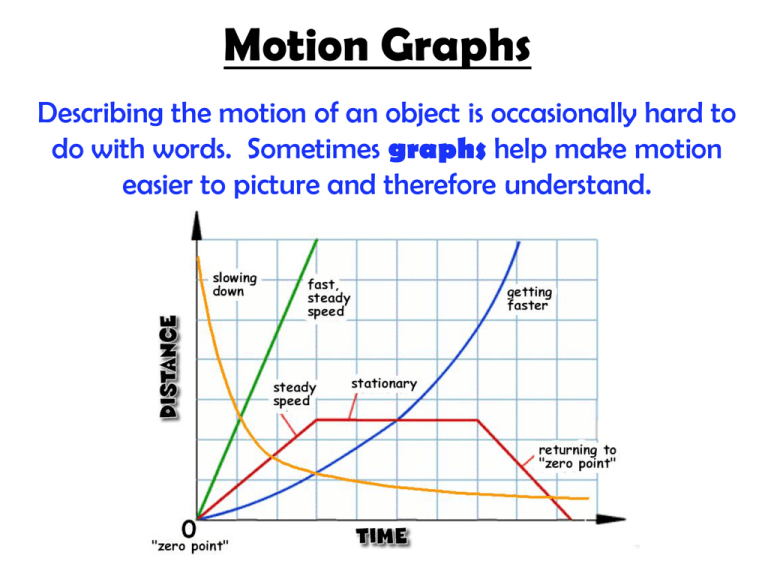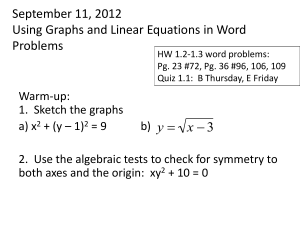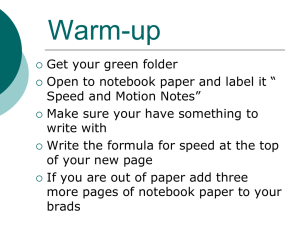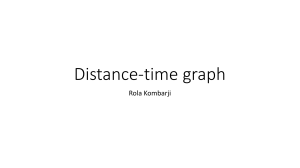Motion Graphs
advertisement

Motion Graphs Describing the motion of an object is occasionally hard to do with words. Sometimes graphs help make motion easier to picture and therefore understand. Remember: • Motion is a change in position measured by distance and time. • Speed tells us the rate at which an object moves. • Velocity tells the speed and direction of a moving object. • Acceleration tell us the rate speed or direction changes. Distance-Time Graphs • Use a line graph to plot distance against time. • Time is always plotted on the X-axis (bottom of the graph). – The further to the right on the axis, the longer the time from start. • Distance is plotted on the Yaxis (left side of the graph). – The higher up the graph, the further from the start. If you see these graphs… • Time is increasing to the right, but its distance does not change. It is not moving. • We say this object is “at rest.” • If an object is not moving, a horizontal line is shown on a graph. • If an object is moving at a constant speed, it means it has the same increase in distance in a given time. • Time is increasing to the right and distance is increasing constantly with time. The object moves at a constant speed. • Constant speed is shown by a straight, diagonal line on a graph. Let’s look at 2 moving objects… • Both of the lines in the graph show that each object moved the same distance, but the steeper dashed line got there before the other one. • A steeper slope indicates a larger distance moved in a given time. In other words, higher speed. • Both lines are straight, so both speeds are constant. • The line on this graph is curving upwards. • This shows an increase in speed, since the line is getting steeper. • In other words, in a given time, the distance the object moves is changing (getting larger). It is accelerating. Distance (m) Time (sec.) • This graph has a lot going on! • At first, the object is traveling at a steady speed. • At 2 sec., the object stops and remains at rest for 6 sec. • The object then returns back to the “zero point.” It arrives there 10 sec. from when it started moving. Copy this into your notebook… Graphing Motion • A line graph tells us how far an object has moved with time. – The steeper the slope, the faster the motion. – A horizontal line means the object is at rest. – A curved line means the object is accelerating. – A downward sloping line means the object is returning to the zero point (start). Copy this onto graph paper and then glue under your notes… Ready to try some??? 1. Which graph would best describe the motion of an object when it was speeding up? 2. Which graph would best describe the motion of an object when it is moving with a constant speed? 3. Which graph would best describe the motion of an object when it is at rest? Let’s make our own motion graphs!!! Distance (k) Time (min.) 4. A marathon runner was 1 8 working on her next 5K 2 13 time. To the right is a 3 18 chart listing her times as 4 21 she passed each kilometer. 5 23 Create a line graph *** If you finish early, create showing her motion. your own motion story problem. Use Google Slides to show your question and a graph with the solution. Share with your teacher when you are done.








